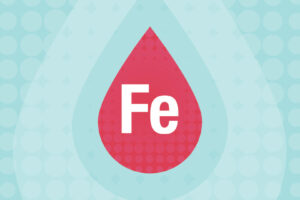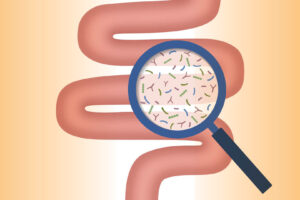When you hear the term anemia, you probably think of low iron. However, low iron is only one of several causes of anemia. In fact, you can have plenty of iron in your body and still be anemic.
Hematology is the study of diseases of the blood. As a hematologist, anemia is one of the most common reasons that patients come to me.
What is anemia?
There are more than 400 types of anemia that can affect children, adults, and older adults. It occurs when the body lacks enough healthy red blood cells to adequately carry oxygen to its tissues. Common types include iron-deficiency anemia, sickle cell anemia, aplastic anemia, and thalassemia.
Red blood cells are made in the marrow of your bones. Hemoglobin, a type of protein in red blood cells, binds to oxygen from your lungs and carries it the rest of your body. When the number of red blood cells decreases, the amount of oxygen transported through your body decreases.
What are the symptoms?
The symptoms of anemia include:
- Fatigue
- Lightheadedness or dizziness
- Shortness of breath when active
- Heart palpitations
- Craving ice or something metallic
- Weakness, numbness, or pain in the hands or feet
- Difficulty walking
What causes anemia?
To effectively treat anemia, we need to know what’s causing it. There is a whole spectrum of causes, but most fall in these three categories:
- Decreased production in bone marrow, which can be caused by myelodysplastic syndromes (MDS), a group of genetic disorders that can develop as we age. Other causes include certain infections, certain medications, radiation for treating cancer, or deficiencies in vitamin B12 or folate.
- Excess blood loss, which can be caused by gastrointestinal bleeding, diverticulosis, bleeding ulcers, gastrointestinal polyps, hemorrhoids, cancerous tumors, or major surgery.
- Destruction of red blood cells, which can be caused by autoimmune issues, cardiac aorta valve replacement procedures, infections, or genetic or inherited anomalies, such as sickle cell anemia, a condition caused by a defective form of hemoglobin that causes red blood cells to become sticky, hard, and crescent-shaped, and Thalassemia, which occurs when your body makes an abnormal form of hemoglobin.
How is anemia diagnosed?
The first step is diagnosing anemia is a blood test called a complete blood count (CBC), which provides information about platelets and red and white blood cells. Additional tests to determine iron, B12, and folate levels may be done. You may require a bone marrow biopsy depending on the results of these tests. If a bone marrow disorder is suspected, a bone marrow biopsy will be conducted. Because a bone marrow biopsy can be painful, I only perform this test when it’s necessary to make a diagnosis.
How is anemia treated?
Treatment varies by the cause of the condition. Therapies include vitamin and mineral supplements, blood transfusions, medication, chemotherapy, or bone marrow transplants.
Are certain people more at risk?
People with nutritional deficiencies and those taking blood thinners or undergoing chemotherapy have an elevated chance of developing anemia. Certain medical conditions, including cirrhosis and chronic kidney disease, also may cause anemia.
Is there a way to prevent anemia?
Because there are a variety of causes for anemia, there isn’t one way to prevent it. Eating a balanced diet can help ward off nutrition-related forms of the condition.
If you think you have anemia, talk to your primary care provider.
Bhavesh Balar, MD is board-certified in hematology/oncology and internal medicine. He is on staff at CentraState Medical Center and can be reached by calling 866-CENTRA7.





